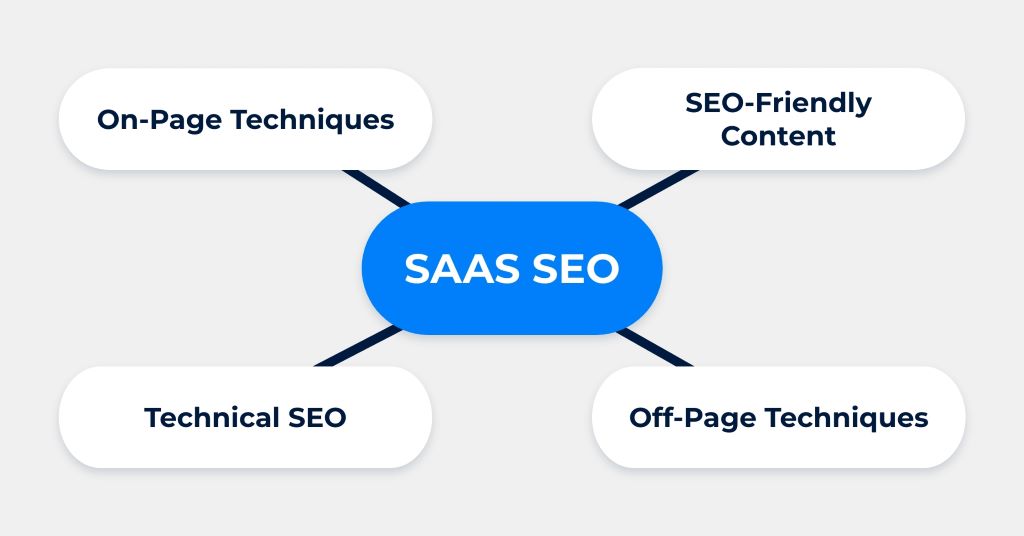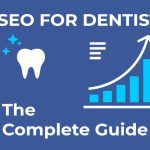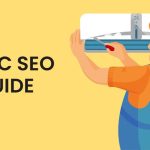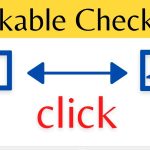Search engine optimization (SEO) is crucial for any software-as-a-service (SaaS) business looking to drive qualified traffic and leads. With more and more businesses moving to the cloud, competition in SaaS SEO continues to grow. If your SaaS application isn’t findable in organic search, you are missing out on a huge opportunity to connect with customers searching for solutions like yours. Implementing effective SEO strategies takes time and effort, but pays off tremendously in the long run by increasing organic visibility and reducing cost-per-lead. This guide covers key tactics and best practices for optimizing your SaaS product pages, blog, and overall website for higher rankings and more traffic. Follow these SEO tips to start driving more high-quality leads and customers to your software app.
Focus on Topic Relevance and Comprehensive Content
At its core, SEO is about creating content that answers user intent. The goal is to match what people are searching for with comprehensive, useful information on your site. To rank for competitive SaaS keywords, you need in-depth content focused specifically on topics people are exploring around your software category and features.
For example, if you offer a web analytics SaaS, create posts around keyword themes like:
- Beginner’s guide to web analytics
- How to choose the best web analytics software
- Web analytics tools comparison
- How to track ROI with web analytics
The content should dig deep into each specific topic, providing value to the reader well beyond what competitors offer. Focus on being the absolute best resource on each topic. Include statistics, visual examples, comparisons, and actionable tips.
Ideally, your SaaS site should have a content library spanning hundreds of pages, continually expanding over time. Driving this amount of content requires an ongoing investment but also delivers exponential SEO value in return.

Optimize SaaS Product Pages
Your individual SaaS product and pricing pages need to be meticulously optimized, as they are the most important pages for converting searchers ready to buy. Here are key elements to focus on:
Compelling Title Tags
Title tags appear as the clickable headline for your listing in search engine results. Keep them under 60 characters, with primary keywords front-loaded. Include your brand name and key software descriptor terms.
For example: “Acme Web Analytics Software | Measure ROI and Optimize Sites”
Strategic Headers
Use H1 and H2 header tags to call out sections describing features, capabilities, and benefits. Incorporate target keywords appropriately.
Engaging Page Copy
The full page copy should pull visitors in and speak directly to their needs. Explain exactly how your software addresses their pain points and delivers value. Use keywords naturally while maintaining an engaging tone.
Eye-catching Images/Videos
Include screenshots, interface views, animations, and videos to showcase your software visually. Optimize file names and ALT text with keyword phrases.
Compelling Call to Actions
Calls-to-action (CTAs) motivate visitors to sign up for a free trial or demo. Strategically place them above the fold and again near the bottom of the page.
External Links
Links from authoritative sites indicate expertise and boost relevance. Secure guest posts, sponsorships, or interviews on industry blogs that will link back to your key product pages with branded anchor text.
Schema Markup
Add schema markup to product pages so they stand out richly in search results. This enriches how Google displays your pages with additional details like ratings, images, pricing, and more.
Produce Engaging Blog Content
A SaaS blog is your megaphone for reaching people interested in your software niche. Regular educational blogging establishes you as an authority and gets your brand in front of new audiences. Here are tips for maximizing your SaaS blog for SEO:
Publish Frequently
Post at least 2-3X per week to keep bringing in new visitors from search engines. More frequent posting also helps build overall domain authority for your SaaS site.
Create In-Depth Posts
Aim for long-form content between 2,000 – 3,000 words per post. Thorough, well-researched posts perform better because they fully satisfy user intent for specific topic searches. Use your blog to really cover topics comprehensively.
Focus on Informative Topics
Look at search trends and volume to identify topics people are actively exploring related to your software niche. Create useful “how-to” posts, comparison articles, beginner guides, and thought leadership content around these themes. Answer the questions searchers are asking.
Optimize with Target Keywords
Conduct keyword research to find low competition long-tail keywords and phrases to target. Optimize blog titles, meta descriptions, headers, body content, URLs, alt text, and links with these terms.
Promote New Content
Drive traffic to new posts through social media, email lists, paid ads, and outreach pitching relevant websites to pick up your articles. Promotion amplifies the SEO impact of new content.
Blogging should become a cornerstone of your overall content strategy. Consistently publishing original, helpful content will continually bring in fresh visitors from organic search.

Improve Site Architecture
Beyond content and pages, a SaaS site’s information architecture and technical foundations significantly impact SEO success. Here are structural elements to optimize:
Fast Load Speeds
Site speed is a ranking factor. Improve page load times by minifying code, optimizing images, using caching, and upgrading to faster hosting. Strive for under 2 second loads.
Mobile Optimization
With over 50% of search happening on mobile, a mobile-friendly responsive site is mandatory. Test across devices and fix any usability issues. Accelerated Mobile Pages (AMP) can also improve mobile SEO.
XML Sitemaps
A comprehensive sitemap helps search engines discover new URLs and content. Generate an XML sitemap and submit it to Google Search Console for improved indexing.
Effective Navigation
Make navigation clear and intuitive so visitors easily find pages. Use descriptive text links, logical categories, and options for deep site navigation. This improves on-site engagement.
Quality Backlink Profile
Earn backlinks from relevant industry websites through outreach and contributor content. Prioritize contextual links from authoritative, trusted sites. Monitor backlinks and disavow low-quality ones.
Optimized Page Speed
Unoptimized images, code, and servers slow down site speed. Use caching, compression, CDNs, and other optimizations to accelerate load times. Fast sites improve visitor experience and rankings.
Continuously refine information architecture as your SaaS site grows. A well-structured website provides the right foundation for SEO success.
Do Competitor Analysis
Research how top competitors rank for your target keywords helps inform your own SEO strategy. Use tools like SEMrush, Ahrefs, or Moz to analyze competitors’ search visibility, backlinks, keyword rankings, and site optimization strengths.
Look for keyword opportunities they may be missing based on their current content. See what backlinks they have earned on authoritative sites which you could also potentially get links from. Reverse engineer what’s working well for leaders in your space.
Then use competitor insights to expand your keyword footprint, acquire strategic backlinks, and publish new content where competitors lack thorough resources. Regular competitor analysis allows you to leapfrog sites in your industry by learning from their SEO successes.
Build Links Through Outreach
Earning high-quality backlinks remains one of the most important SEO success factors. Beyond great content, you need external sites linking back to your product and blog pages with contextual anchor text and page authority.
An outreach and guest post strategy should be core to your link building efforts:
Identify Relevant Sites
Make a target list of authoritative websites, blogs, and resources related to your SaaS niche. Prioritize sites that already link to competitors.
Personalize Pitches
Craft customized pitches highlighting why your content would be valuable to each site and their audience. Avoid spammy template outreach.
Provide Link-Worthy Content
Offer guest posts, data studies, expert interviews, infographics, and other assets the site would benefit from publishing. Send content ideas tailored specifically to each site.
Follow Up Diligently
Politely follow up within a week if you don’t hear back on initial outreach. Don’t send more than 2-3 follow ups. Provide value and build relationships with influencers over the long haul.
Secure Contextual Links
When placements get accepted, ensure your author bio includes a contextual link back to your SaaS site. Publish more content to that site in the future to build an ongoing relationship.
Securing authoritative links signals trust and elevates your site’s industry credibility, improving search rankings over time.

Leverage Paid Channels Too
While SEO delivers highly qualified organic traffic, paid search and social ads are powerful complements for increased visibility. Here are ways to effectively incorporate paid channels into the marketing mix:
PPC Keyword Research
Do thorough keyword research to identify high-value PPC keywords related to your software offerings and capabilities. Build out associated ad groups and landing pages.
PPC Ads on Branded Terms
Bid on your SaaS brand keywords so you occupy the top sponsored spots above organic results. Preempt competitors trying to bid on your brand.
Retargeting Ads
Remarket SaaS product pages and blog content to visitors who left your site. Retargeting boosts conversions.
Paid Social Promotion
Sponsor key blog posts on LinkedIn and Facebook to reach more of your target audience. Promoted social content expands visibility.
PPC Landing Page Optimization
Ensure landing pages are mobile-friendly with clear calls-to-action. Provide pricing and feature details showcased in your PPC ads. Optimize for conversions.
Investing in paid ads and smartly integrating them with content and landing pages can drive significant volumes of new leads. Coordinate your SEO and paid strategies for amplification.
Track Progress and Optimize
The final piece of executing an effective SEO strategy is properly tracking key metrics and refining your approach over time. Here are important factors to monitor:
Keyword Rank Tracking
Use tools to track rankings for your target keyword list, both locally and nationally. Look for opportunities to improve.
Traffic and Lead Volume
Measure overall organic traffic and conversion rates from searches. These are your top-level SEO success metrics.
Click-Through-Rates
Monitor click-through-rates on rankings for key terms to gauge relevance. Lower CTRs may indicate content gaps.
Backlink Growth
Keep expanding total backlinks, especially from .edu and .gov domains. Backlink velocity and quality impact rankings.
New Referral Sites
Check Google Analytics for new sites driving traffic to spot guest post opportunities or places to pursue links.
Use tracking data to shape your evolving optimization efforts. SEO is an ongoing process, but the continual return from increased organic visibility is well worth the investment for any SaaS business.
Frequently Asked Questions
What is the most important element of SaaS SEO success?
Producing comprehensive, high-quality content that targets topics people are actively searching about in your software category. Matching user intent with in-depth posts optimizes for rankings and traffic.
How much budget should go towards SEO services or tools?
Aim for 10-20% of your annual marketing budget allocated towards SEO. Factor in costs of high-quality content production, outreach team members, technical optimizations, analytics platforms, rank tracking, and ad spend.
How long does it take to see results from SaaS SEO efforts?
It realistically takes 6-12 months to start seeing significant organic growth from a new SEO strategy. Achieving top rankings for competitive keywords can take even longer. SEO success requires patience and consistent effort over an extended timeframe.
Should my blog and product pages target the same keywords?
Generally focus product pages on commercial keywords for bottom-of-funnel leads, while targeting more informational keywords for top-funnel traffic on your blog. But look for relevant cross-over terms that apply to both content types.
What SEO metrics matter most?
Rank tracking for target keywords, overall organic traffic growth, conversions and leads from search, and total backlinks gained from outreach efforts. Measure progress across all these SEO factors over time.
Conclusion
Implementing a comprehensive SEO strategy tailored to SaaS delivers outstanding ROI through increased organic discovery and conversions. From optimized product pages to engaging blog content, backlink building to conversion tracking, there are many factors that go into SaaS SEO success. Follow these best practices to start driving more qualified leads and customers to your software from search.
While achieving high rankings takes significant time and effort, the continual inbound traffic SEO provides will have a major impact on long term business growth.
To enhance customer acquisition for your business, focus on optimizing website content and architecture, monitoring metrics diligently, and expanding link-building efforts. By maintaining a consistent, high-quality SEO process, your SaaS product will ascend the search rankings, resulting in increased visibility and a steady influx of leads from organic search over time.







